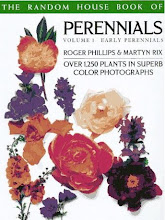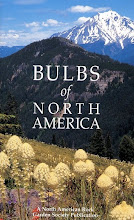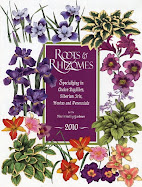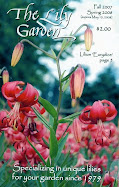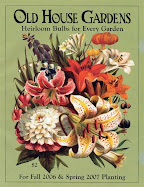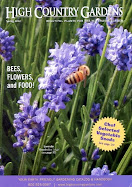Viburnum sargentii 'Onondaga' May 2009




These shrubs for sun are all good plants for gardens in Seattle, the Pacific Northwest &
USDA Zone 8. They have good form, lovely flowers, colorful foliage & other characteristics that endear them to many gardeners. Some of these shrubs tolerate dryness, others are
xeric plants that prefer well-drained soil. Most of these should be fairly easy to find. When local nurseries fail, try mail-order nurseries.
Forest Farm is a good source for uncommon plants. This list is not meant to provide detailed information on shrubs, but to introduce you to some you may not know, or remind you of those you have forgotten. Be sure you know how large these shrubs grow before you plant them. Many shrubs do not look good when sheared or heavily pruned. An abundance of detailed information is available on the web. Good reference books on shrubs are
The Hillier Gardener's Guide to Trees & Shrubs edited by John Kelly,
Shrubs by Roger Phillips & Martyn Rix,
Sunset Western Garden Book.
Berberis darwinii (Darwin's Barberry): showy bloom, evergreen,
Berberis thunbergii 'Aurea' (Golden Japanese Barberry)
Berberis thunbergii 'Crimson Pygmy',
Berberis thunbergii 'Helmond Pillar',
Berberis thunbergii 'Rose Glow',
Berberis thunbergii 'Royal Cloak' (Red Japanese Barberries): good foliage color, barbs a problem only when pruning, wear thick gloves
Callicarpa bodinieri 'Profusion' (Beautyberry): beautiful fruit, not such a beautiful form, can become large, does not look good when pruned
Ceanothus impressus 'Vandenberg' (Santa Barbara Mountain Lilac)
Ceanothus thyrsiflorus 'Victoria' aka 'Skylark' (Blue Blossom): xeric, showy bloom, not long-lived, these 2 are the most commonly grown in Seattle, others may suffer frost damage
Cedrus atlantica 'Glauca Pendula' (Weeping Atlas Cedar): blue foliage, interesting form, may need staking when young, can spread widely, but takes well to pruning
Chamaecyparis lawsoniana 'Blue Surprise',
Chamaecyparis lawsoniana 'Ellwoodii' (Dwarf Port Orford Cedar): & other cultivars with slender, upright form,
Chamaecyparis obtusa ‘Nana Gracilis’,
Chamaecyparis obtusa ‘Nana Lutea’ (Dwarf Hinoki Cypress): & other cultivars, good form
Chimonanthus praecox (Wintersweet): fragrant winter bloom
Cistus x hybridus (White Rockrose)
Cistus ladanifer (Crimson Spot Rockrose)
Cistus x purpureus (Orchid Rockrose): & many other species, xeric, long period of showy bloom, short-lived
Cotinus coggygria (Smoke Bush): tolerates dryness, beautiful foliage & flowers, but often an awkward form
Daboecia cantabrica (Irish Heath): tolerates dryness, long period of bloom
Daphniphyllum macropodum: nice form, evergreen, unusual almost tropical appearance
Deutzia x elegantissima,
Deutzia gracilis (Slender Deutzia)
Deutzia x hybrida (Hybrid Deutzia)
Deutzia x rosea (Pink Deutzia): needs moisture, beautiful bloom, lovely arching form, give it room to spread
Dorycnium hirsutum (Hairy Canary Clover): xeric, small shrub of Mediterranean origin
Erica arborea 'Estrella Gold',
Erica australis,
Erica carnea,
Erica x darleyensis (Heath): & many other species & cultivars, showy bloom, often in winter
Escallonia 'Apple Blossom',
Escallonia rubra (Escallonia): & many other cultivars, tolerates dryness, showy mass of flowers
Euonymus alatus (Burning Bush): colorful fall foliage,
Euonymus japonicus (Japanese Euonymus): many cultivars with colorful evergreen foliage
Exochorda x macrantha 'The Bride',
Exochorda racemosa (Pearl Bush): beautiful but huge, does not take well to pruning, needs moisture
Forsythia: showy late winter/early spring bloom
Juniperus chinensis 'Torulosa' (Hollywood Juniper)
Juniperus chinensis 'Blue Point',
Juniperus communis 'Compressa' (Dwarf Irish Juniper)
Juniperus communis 'Hibernica' (Irish Juniper)
Juniperus squamata 'Loderi': tolerates dryness, good form, evergreen, tough
Lavandula angustifolia (English Lavender)
Lavandula dentata (French Lavander)
Lavandula stoechas (Spanish Lavender): xeric, fragrant
Lavatera thuringiaca (Tree Mallow): showy bloom, grows quickly, but short-lived
Lithocarpus densiflorus var. echinoides (Dwarf Tanoak): evergreen, uncommon
Lupinus arboreus (Tree Lupine): xeric, very showy bloom, fragrant, short-lived
Magnolia 'Ann',
Magnolia 'Betty',
Magnolia 'Jane',
Magnolia 'Judy',
Magnolia liliiflora,
Magnolia x loebneri 'Leonard Messel',
Magnolia 'Pinkie',
Magnolia 'Randy',
Magnolia 'Ricki',
Magnolia sinensis,
Magnolia stellata (Star Magnolia)
Magnolia 'Susan',
Magnolia x thompsoniana,
Magnolia wilsonii: beautiful flowers, these slowly become large shrubs
Myrtus communis (Common Myrtle): glossy leaves, striking appearance, evergreen
Olearia x haastii,
Olearia x mollis: showy bloom, good foliage color
Neillia affinis,
Neillia sinensis: showy bloom, good form, uncommon
Osmanthus x burkwoodii: evergreen, fragrant bloom,
Osmanthus delavayi: evergreen, fragrant bloom,
Osmanthus heterophyllus 'Goshiki': & other cultivars, colorful evergreen foliage
Paeonia suffruticosa: very showy bloom, needs staking, very long-lived
Penstemon pinifolius (Pineleaf Beardtongue): xeric, showy bloom, evergreen
Pernettya mucronata: colorful fruit, several cultivars
Philadelphus coronarius (Common Mock Orange)
Philadelphus lewisii (Western Mock Orange): tolerates dryness, showy fragrant bloom
Phlomis fruticosa,
Phlomis italica,
Phlomis ‘Edward Bowles’ (Jerusalem Sage): xeric, good foliage color & texture
Physocarpus capitatus (Western Ninebark): tolerates dryness, attractive flowers & fruit,
Physocarpus opulifolius 'Dart's Gold',
Physocarpus opulifolius 'Diabolo' (Eastern Ninebark): colorful foliage, attractive flowers & fruit
Picea abies 'Inversa' (Weeping Norway Spruce)
Picea abies 'Nidiformis' (Nest Spruce)
Picea glauca var. albertiana 'Conica' (Dwarf Alberta Spruce)
Picea pungens 'Procumbens' (Creeping Colorado Spruce): dwarf evergreen conifers with good form
Pieris japonica (Lily of the Valley Shrub): many cultivars with showy, fragrant bloom, also grows in shade
Pinus mugo var. pumilio,
Pinus mugo 'Valley Cushion' (Mugo Pine): tolerates dryness, good dwarf forms of a small pine
Podocarpus nivalis (Alpine Totara): good form & foliage, evergreen
Potentilla fruticosa (Cinquefoil):many cultivars, showy bloom
Rosa rugosa: xeric, fragrant, tough, one of the easiest roses to grow






























































